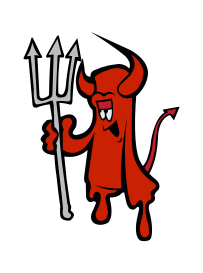Germain's vagina
Posted Mar 2, 2011 by anonymous | 278 views | 0 comments
BOILS What are boils? Boils or skin abscesses are inflamed and pus-filled areas of skin that look like oversized pimples. A boil generally starts as a reddened, tender area that becomes firm and hard over time. Eventually, the centre of the boil softens and becomes filled with pus that finally ‘forms a head' and drains out through the skin. Also known as furuncles, boils are painful and can develop anywhere on the body, but often in areas like armpits, breasts, buttocks, face, genitals, and neck. There are a number of different types of boils Furuncle or carbuncle — this is an abscess that is caused by the Staphylococcus aureus bacteria and can have more than one opening. It may be accompanied by fever or chills. Cystic acne — this type of abscess forms when the oil ducts in the skin become clogged, causing infection. This is commonly seen in adolescents. Hidradenitis suppurativa — this is a condition where multiple abscesses form under the armpits or groin area and is generally caused by an inflammation of the sweat glands. Pilonidal cyst — this is a specific type of abscess that develops in the crease of the buttocks often resulting from an ingrowing hair that continues to grow, or from long periods of sitting. This type of abscess needs to be removed surgically. What are the symptoms of boils? A red lump on the skin that grows and becomes filled with pus. Tenderness and pain, which is sometimes severe in the affected area. Fever, occasionally. Septicaemia can be a complication resulting from boils. What causes boils? There are a number of causes of boils. One cause can be from an ingrown hair causing an infection of a hair follicle, usually by Staphylococcus bacteria. Others may be caused by a foreign object such as a splinter becoming stuck in the skin and causing an infection. Additional causes are blocked sweat glands that become infected or any break in the skin that allows bacteria to enter. The pus that collects in a boil also contains bacteria that are highly infectious. Anyone may have a boil form, however, there are some people who are more susceptible, including people with diabetes and kidney problems. Also, if a person suffers from immune system deficiencies, they may be more susceptible to boils. How is a boil treated? The most common form of treatment is the application of some type of hot pack. The heat increases the circulation to the area and increases the body's ability to fight infection. Once the head of the boil forms it can be drained which will give considerable pain relief. Larger boils may need to be lanced by your doctor who may also prescribe antibiotics for the infection. What you can do Consult a doctor if the boil is on the face, shows signs of worsening, if there is fever, if it recurs in one or 2 days, or if it has not healed after one or 2 weeks. Do not burst a boil, as the infection may spread. Let it rupture on its own. Apply a hot, moist compress 3 times a day, for about 10 minutes at a time to help ‘ripen' the boil. Take simple painkillers. After the boil has burst, wash the area thoroughly with soap and water, or an antiseptic solution, and cover it with dry dressing. Repeat the procedure daily until the area is completely healed. Shower instead of bathing, as this decreases the chances of spreading the infection. What your doctor can do for you Lance the boil with a sterile needle or scalpel, drain the pus, and cover the area with a dry dressing. Prescribe antibiotics. Check your urine or blood for diabetes. Check if the boil is a symptom of any other underlying condition. Preventing boils Avoid scratching an itch, as infection may set in if the skin breaks. Apply antiseptic lotion such as cetrimide or acriflavine on broken skin to prevent infection. Wash your hands or any other part of the body with soap and water if it comes into contact with an oozing boil.


No comments yet. Be first!